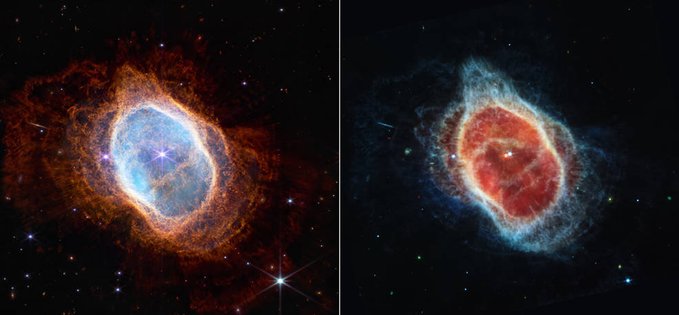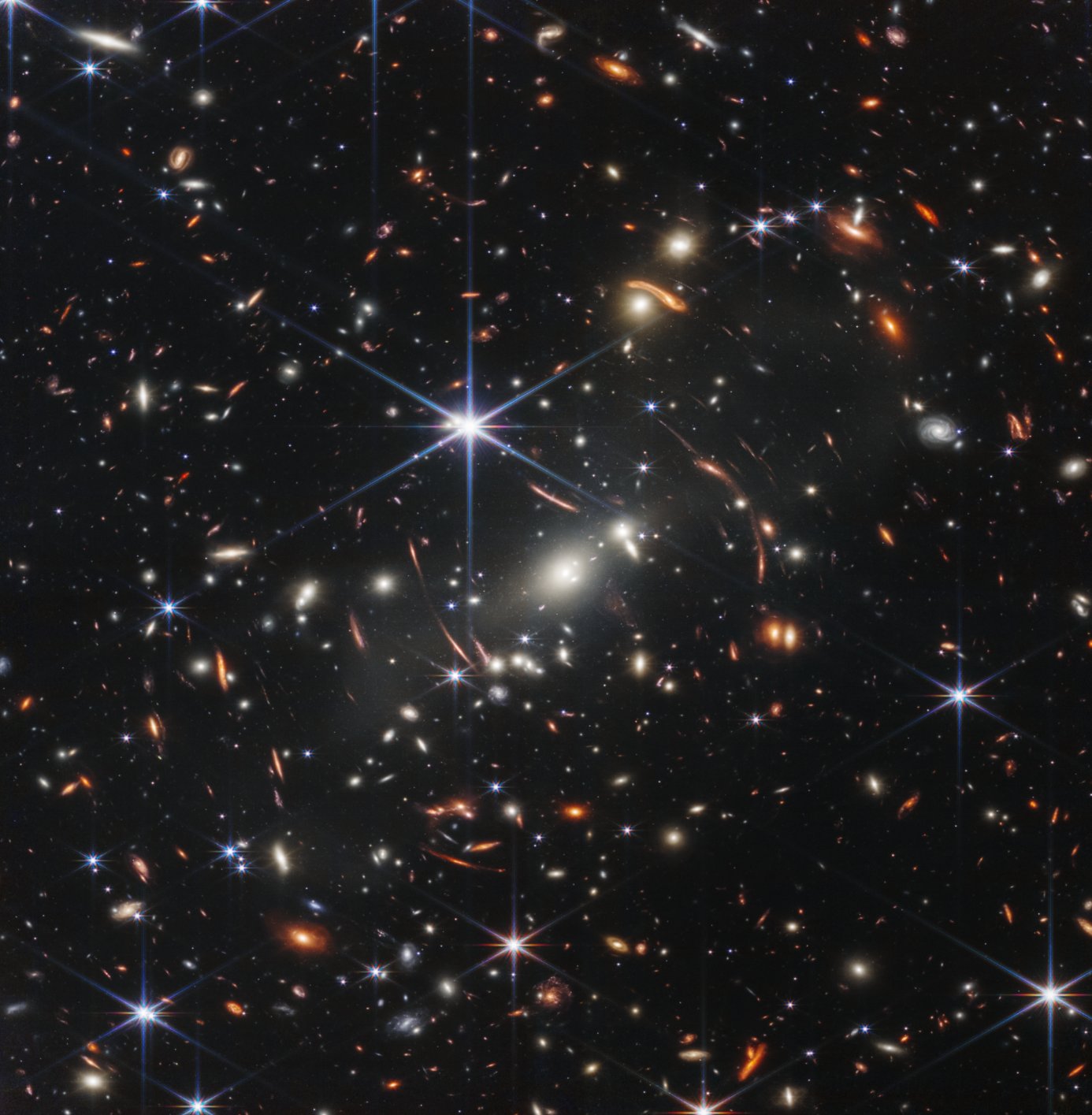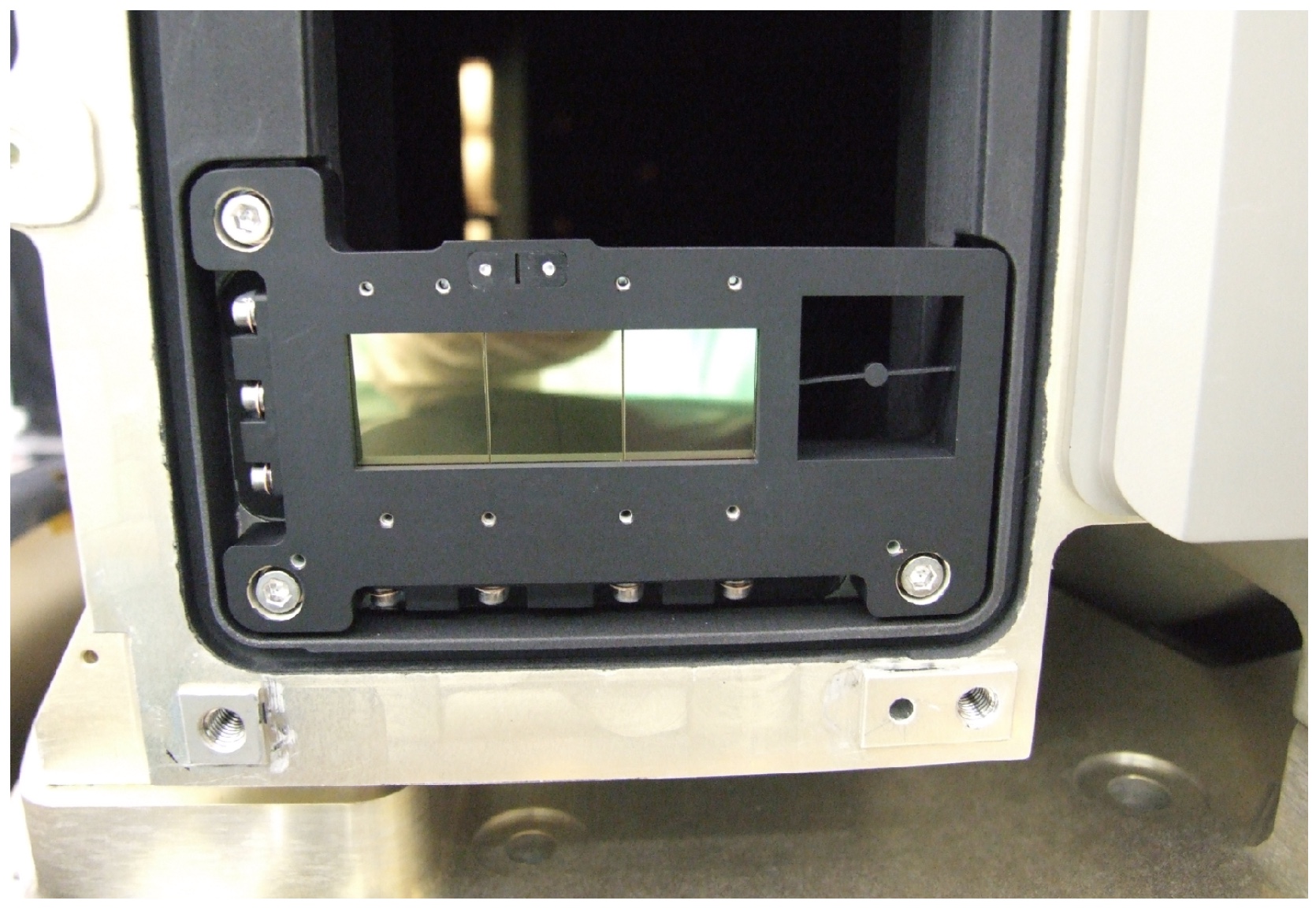We start with a deep field, which shows galaxies, galaxies, galaxies ... or rather a supermassive cluster of galaxies that distort by a gravitational effect on the space-time of other background galaxies.
This is the subject which motivated the realization of this telescope : to observe the first galaxies of the Universe to understand their formation. And for this, it is necessary to observe in the infrared because of the famous redshift. In only 10 hours of exposure, the NIRCAM instrument demonstrates a remarkable sensitivity. Imagine what we will be able to see with exposure times of hundreds of hours, as was done with the Hubble Space Telescope.
We discover here the first spectrum realized by the Webb telescope of a giant exoplanet. It is WASP-96b which transits in front of its star. It is a hot Jupiter so we see mainly signatures of water vapor. And we also deduce that the planet is covered with clouds and mists, given the amplitude of variations in the spectrum.
The spectrum was obtained by the Canadian instrument NIRISS, in the near infrared between 0.7 and 2.8 microns. This image offers beautiful perspectives concerning science in exoplanetology. Many other planets will indeed be observed by the Webb, such as the Trappist 1 system which contains several super-Earths, planets whose size is similar to Earth but which orbit a star barely larger than the planet Jupiter !

We move to the Southern Ring planetary nebula observed with the NIRCAM instrument. Nothing more than a dying star releasing the gas from its upper layers into space. The MIRI image (right) shows that the central star is a binary.
And now Stephan’s Quintet, a cluster of 5 interacting galaxies 290 million light years away. Some are merging and forming new stars. The image combines data from NIRSPEC and MIRI thus on a very large spectral range. MIRI shows the distribution of dust and gas.
Last image of this first series, a nebula in the southern hemisphere located in the Carina. The most massive young stars ionize the environment of gas and dust.
These are impressive data, promising perspectives for future projects, including those carried out by LESIA researchers.
And we take the opportunity to present the coronagraphic images of MIRI, totally unpublished.
The MIRI coronagraphs are based on an original idea of Daniel Rouan (LESIA, Observatoire de Paris - PSL) published in 2000. We had then joined the French team of the MIRI project with the CEA, the IAS and the LAM.
These phase-mask coronagraphs produce an interferential phase shift that rejects the light of the central star in order to observe the surrounding exoplanets. It was necessary to design these optical components for the mid-infrared.
Here are the three 4 quadrant masks installed in their support and next to them the more classical Lyot mask.
These images show a star attenuated by the coronograph by a factor greater than 100, for the different filters of MIRI between 10.65 microns and 23 microns. The bottom line corresponds to the model images obtained by simulations. These filters were chosen to analyze the atmospheres of young giant exoplanets.






